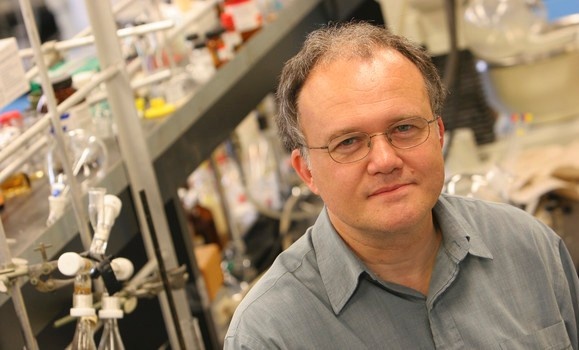At the heart of every new disease-fighting drug, there’s a medicinal chemist designing, making, and testing molecules.
In the case of Alzheimer’s disease, that chemist is Dr. Donald Weaver, Dalhousie professor and Canada Research Chair in Clinical Neuroscience. For the last ten years, Dr. Weaver and his team have been working on designing molecules with all the properties to become a drug that will treat various chronic neurological disorders.
Last month, Dr. Weaver was awarded the 2011 Jonas Salk Award, presented by Sanofi Pasteur and the March of Dimes Canada, for his groundbreaking work in disease modifying drugs aimed at treating and eventually curing Alzheimer’s disease and epilepsy.
The award is presented each year to a Canadian scientist, physician or researcher who has made a new and outstanding contribution in science or medicine to prevent, alleviate or eliminate a physical disability.
Stopping Alzheimer's "relentless downhill course"
“Dr. Jonas Salk stopped polio in its tracks so being associated with his name and getting this recognition is extremely gratifying,” Dr. Weaver says. “Drug development is very demanding and requires a lot of support so it’s rewarding at both an emotional level and practical level.”
While Dr. Weaver studies a range of chronic neurological disorders, the majority of his efforts are focused on Alzheimer’s disease.
“Alzheimer’s disease has a relentless downhill course,” he says. “We don’t want to develop something that will temporarily help with symptoms; we want to come up with something that will stop it.”
What Dr. Weaver and his team of 22 researchers are endeavouring to do is design a drug that will act as an anti-clumping agent, preventing the aggregation of proteins in the brain that leads to memory loss and cognitive impairment.
“There are two proteins in your brain – amyloid and tau,” he explains holding up his left and right hand to represent the two. "When they aggregate and clump up, that’s bad – that’s toxic to the brain. But when we can prevent either amyloid or tau, or both, from clumping, that’s good!”
Using computer-aided modeling systems, these “anti-clumping agents” start out as molecules and are then tried and tested several times over.
"A long, bumpy road"
However, just because you have a molecule doesn’t mean it’s a drug, explains Dr. Weaver. It’s essential to understand a disease at a molecular level and use that understanding to discover a drug that will improve the quality of people’s lives.
“Drug development is a long, bumpy road with a lot of obstacles,” he says. “But being a practicing neurologist, I get to see patients with this disease so it’s a good sense of motivation.”
While the timeline may be difficult to determine, Dr. Weaver is confident there will be significant advancements in Alzheimer’s-fighting drugs in the next five to ten years.
So what does success look like to Dr. Weaver?
“A drug that finally makes it to patients and changes their lives. That’s the jackpot.”

